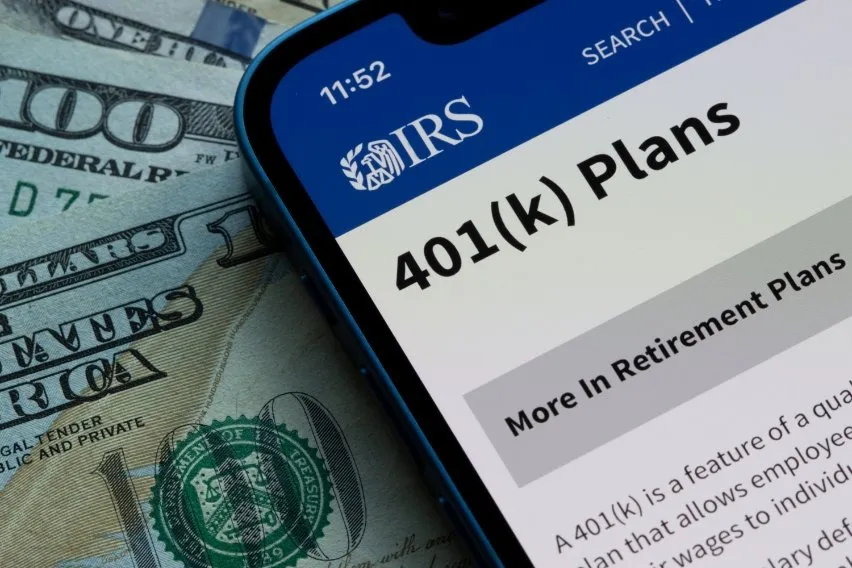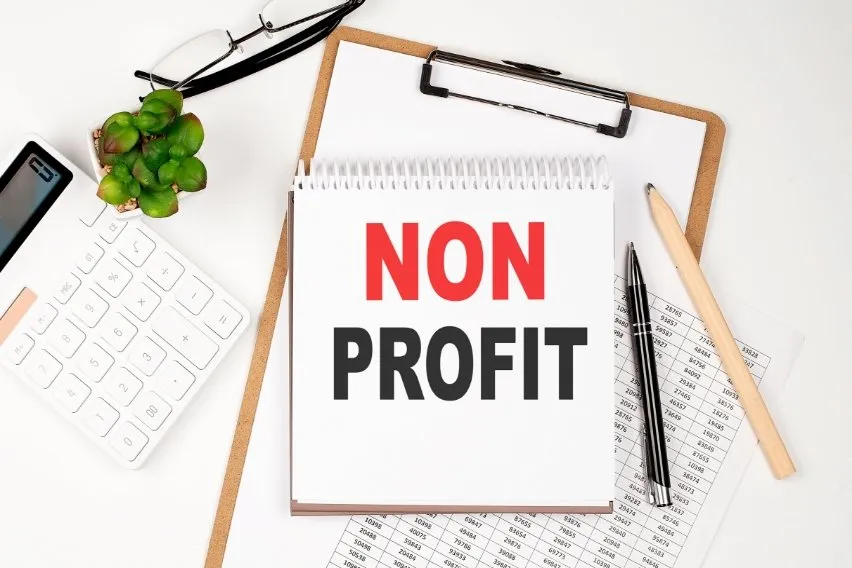Types of 401(k) Plans: Everything You Need to Know

A 401(k) plan is a type of qualified retirement plan that allows employees to have a portion of their wages contributed to an individual account. These deferrals are excluded from an employee’s taxable income and invested on their behalf. 401k contributions are 100% vested. 401(k)s are known as defined contribution plans, which means they’re funded by employee contributions (though the employer might sometimes contribute as well).
In this article, we’ll explain what exactly a 401(k) is, go over why they’re so important when planning for retirement, and cover and compare the various types of 401(k) plans and their uses. We’ll also be going over how a 401(k) earns money on your behalf, the withdrawal rules, contribution limits, and other options for retirement plans to consider. Let’s take a look.
Table of Contents
- What Is a 401(k) Plan?
- How 401(k) Plans Work
- Types of 401(k) Plans
- 401(k) Types Chart
- How Does Your 401(k) Earn Money?
- When Can You Withdraw From a 401(k)?
- What Is the Maximum Contribution to a 401(k)?
- Other Types of Retirement Savings Plans
- Streamline Your Payroll Management with FreshBooks Payroll
- Frequently Asked Questions
Key Takeaways
- There are a few types of 401(k) plans, but the most common are traditional 401(k)s and Roth 401(k)s.
- 401(k) plans allow employees to make contributions to a retirement savings account with certain tax advantages—the money is then invested, growing over time.
- Traditional 401(k) plans let you make pre-tax contributions (which can be matched by an employer), lowering your tax liability—however, withdrawals are taxed after retirement.
- Roth 401(k) plans require after-tax contributions—they don’t lower your tax liability immediately, but the withdrawals are tax-free after 59 ½ years of age, assuming you’ve had the plan for 5 years or more.
- 401(k) plans are subject to contribution limits which are annually adjusted for inflation by the IRS.
- Payroll software can help employers ensure compliance and prevent errors when calculating 401(k) plan contributions.
What Is a 401(k) Plan?
A 401(k) is a type of tax-advantaged, profit-sharing, employer-provided retirement savings plan. It allows employees to have a portion of their pay withheld by their employer and contributed to their individual accounts. This money is then invested on the employee’s behalf, which increases the amount available for retirement withdrawals. The employee selects which stocks, bonds, and other securities the money is invested in.
Depending on the plan, employers might match employee contributions to a 401(k), and with some plans, employer matching is mandatory. In either case, 401(k) plans are an invaluable savings tool for retirement planning, offering tax advantages and security for the future.
There are two main kinds of 401(k) plans: traditional and Roth. In traditional plans, employee contributions are made pre-tax, which means that your taxable income is reduced in the year that you make your contributions. However, the funds are taxed upon withdrawal from a traditional 401(k). Roth plans, on the other hand, are funded by after-tax income. This means they don’t reduce your taxable income, but they’re also not taxed upon withdrawal.

How 401(k) Plans Work
401(k) plans allow you to make tax-deferred contributions from your salary into the account in order to save for retirement. This money then grows based on the investments you choose—typically lower-risk stock and bond mutual funds and target-date funds. In other words, you’re both saving and investing money at the same time.
When you set up a 401(k), you authorize your employer to contribute a certain percentage of your pay to the plan. In some cases, your employer will also match these contributions up to a certain amount.
Depending on whether you have a traditional or Roth 401(k), you can also use your plan to reduce your tax liability for a given year by maximizing contributions and reducing taxable income.
Types of 401(k) Plans
Types of 401(k) contributions vary depending on whether the retirement funds get taxed before or after making the savings. They also vary depending on the number of participants involved. Different 401(k) plan types include:
- Traditional 401(k) plan
- Safe Harbor 401(k) plan
- SIMPLE 401(k) plan
- Roth 401(k) plan
- Solo 401(k) plan
Let’s take a look at each of these individually.
Traditional 401(k) Plan
The traditional 401(k) plan was the only defined contribution plan available when 401(k) plans were introduced in 1978. With a traditional 401(k) plan, the contribution amount is deducted on a pre-tax basis. As a result, the earnings are tax-deferred. Basically, you can make pre-tax elective deferrals through payroll deductions.
Many large and small business owners go for these pre-tax contributions. It allows them to offer retirement benefits for eligible employees. As a rule of thumb, employees wishing to be in a lower marginal tax bracket after retirement opt for a traditional 401(k) plan.
Your savings are not taxed until you decide to cash out, which is often during retirement. Also, this will be at ordinary income rates. This reduces your income taxes and lets you put paying them off until you’re in a lower tax bracket.
The advantages of a traditional 401(k) plan include flexibility and the opportunity for a mutual investment account. You also get the ability to tweak employer contributions each year, plus high levels of salary deferrals on behalf of employees. This 401(k) plan is best for public and private companies with 20 or more employees, as it includes both the employee’s and employer’s contribution.
Traditional 401(k) Plan Limitations
As of 2024, the maximum amount you can contribute annually towards a traditional 401(k) is $23,000. In a traditional 401(k) plan, the employer can make contributions on behalf of all participants via matching contributions. These are tax deductible.
Traditional 401(k) Plan Tests
Businesses that choose the traditional 401(k) plans must conduct yearly nondiscrimination tests. This ensures contributions aren’t only favorable for high-earning employees. The test consists of a comparison of the average compensation deferrals. Highly compensated employees have their deferrals compared to those employees with smaller compensations.
It’s also necessary to pass the Actual Contribution Percentage (ACP) and the Actual Deferral Percentage (ADP) tests.
Safe Harbor 401(k) Plan
Safe Harbor 401(k) is the most popular 401(k) retirement plan type. In fact, these plans constitute more than 68% of all 401(k) plans. Simply put, it is the most common type of contribution that an employer makes to an employee’s 401(k) account. It’s a predetermined amount that usually represents a percentage of an employee’s salary.
The most common form of Safe Harbor is a match, meaning that an employer can only contribute if the employee does so. Another form of Safe Harbor is a non-elective. In this plan, the employer commits to make contributions to the employee’s 401(k) account regardless of whether they contribute to it or not.
With a safe harbor 401(k) account, you can contribute up to 100% of your earned income up to $23,000 as an employee in 2024. Employees older than 50 can make an additional catch-up contribution of $7,500.
Benefits of Safe Harbor 401(k) Plan to the Employee:
- It is a source of tax-deferred money
- It provides an incentive to save more
- It provides immediate vesting because an employee is entitled to the employer’s contributions
Benefits of Safe Harbor 401(k) Plan to the Employer:
- You’re exempted from annual compliance testing
- Deduct employer contributions from corporate taxes
- A Safe Harbor 401(k) employer contributions plan will boost employee happiness and help retain talent
SIMPLE 401(k)
SIMPLE 401(k) plan stands for the Savings Incentive Match Plan for Employees. Small business owners with 100 or fewer employees offer these retirement savings plans. Both the employer and the employees contribute to this plan.
The SIMPLE 401(k) plan is good for small businesses and firms that aim to expand in the future due to a 2-year grace period for exceeding 100 employees. This allows the business time to determine which retirement plan will best suit its business model.
Requirements for setting up a SIMPLE 401(k) retirement plan include:
- Not having an existing account
- Having less than 100 employees
- Filing the Form 5500 each year
Employee Contribution Limits
The annual contribution limit in 2024 for simple 401(k) is $16,000. An eligible employee who is older than 50 can make catch-up contributions of $3,500.
Employer Contribution Limits
Limited to a dollar-for-dollar match up to 3% of the employee’s pay or a 2% non-elective contribution for every eligible employer.
Roth 401(k) Plan
The Roth 401(k) plan is a post-tax deductible plan that arrived in 2006. It’s named after William Roth, a former U.S. Senator of Delaware. He was the primary sponsor of the 1997 legislation that passed the Roth IRA.
Tax-free Roth 401(k) employer contributions are the complete opposite of traditional 401(k) plans. The employee contributions towards a Roth 401(k) plan aren’t tax-deferred. They’re made with after-tax dollars.
Your contributions won’t lower your current income tax, but your savings will continue to grow tax-free throughout the years with a Roth plan. Plus, you won’t have to pay taxes on your withdrawals or your investment earnings when you retire.
Overall, the after-tax dollars Roth 401(k) plan is great for those who believe they’ll be in a higher tax bracket after retirement. It’s solid for both highly compensated employees and younger employees.
A business of any size can offer Roth 401(k) plans. The annual contribution limit in 2024 for Roth accounts is $23,000. Employees older than 50 can make an additional catch-up contribution of $7,500.
Solo 401(k) Plan (Not for Employees)
As the name suggests, this is a 401(k) retirement savings plan for self-employed individuals. It’s a great plan for small businesses, sole proprietors, freelancers, and contractors. The Solo 401(k) allows you to fund an account as both an employee and an employer, and then reap the tax-related benefits of both sides. This plan is also called solo-k, self-employed 401(k), individual 401(k), or one-participant 401(k).
The solo 401(k) plan lets the employer make both employer and employee contributions. Doing so helps maximize retirement contributions and business deductions.
Solo 401(k) Plan Limitations
Employer-employee contributions can’t exceed $69,000 annually. They also can’t be less than 100% of the employee’s compensation. You can only contribute up to $7,000 in a traditional Individual Retirement Account (IRA) or $8,000 if you’re 50 or older.
Even better, you can deduct your contributions from your tax returns. That makes this plan an excellent option for self-employed people looking to reduce their income taxes.
Eligibility requirements for a solo tax-deferred 401(k) Plan include:
- Being self-employed
- Generating active self-employment income
- Not having full-time employees (except a business partner or spouse)
- Being the only participant in the business
With a solo 401(k) account, you can contribute up to 100% of your earned income up to $23,000 as an employee. You can also make extra contributions based on the total compensation as an employer. According to the IRS, you can contribute up to 25% of the compensation defined in your solo 401(k) plan.
Some Solo 401(k) Benefits Include:
- Generous tax benefits for small business owners. The contribution limit is high, and if you take advantage of it, you can reduce your tax liability.
- You can borrow against your solo 401(k) funds. The loan limit is $50,000, 50% of the total funds, or whichever is less.
- No taxes or penalties are associated with the loan for a small business owner. However, you’ll still have to pay interest.
Cons of a Solo Tax-Deferred 401(k) Plan Include:
- A solo 401(k) account has more complex management than any other account. As you can imagine, there are many things you can do with the account, so it makes sense that it’s a little challenging to set up.
- You might encounter more fees when using the solo 401(k) account compared to other retirement accounts. This is partly thanks to the extra administrative work required.
401(k) Types Chart
It can be challenging to understand all the different types of 401(k)s when you’re first setting up your plan. Here’s a quick reference guide to help you understand each one:
| 401(k) Type | Key Benefits and Features | Are Employer Contributions Mandatory? | Contribution Limits |
|---|---|---|---|
| Traditional 401(k) |
| No |
|
| Safe Harbor 401(k) |
| Yes |
|
| SIMPLE 401(k) |
| Yes |
|
| Roth 401(k) |
| No |
|
| Solo 401(k) |
| N/A |
|
How Does Your 401(k) Earn Money?
The money you contribute to your 401(k) earns money through employer contributions (if applicable) and investments. When you set up the plan, you can choose from a variety of investments—mainly target-date funds and mutual funds. These accounts contain a variety of stocks, bonds, and various other securities. For most eligible employees, target-date funds are the best, lowest-risk option, as they adjust as you approach retirement age.
With traditional 401(k) plans, you get the benefit of tax-deferred growth because your contributions are made with pre-tax dollars. This means you don’t have to pay taxes on investment gains, interest, or dividends until you make a withdrawal from the account. If you have a Roth 401(k), your contributions are made with after-tax dollars, meaning there’s no immediate tax benefit, but your withdrawals won’t be taxed.
When Can You Withdraw From a 401(k)?
You must be 59 ½ years old before you can make penalty-free withdrawals from your 401(k) retirement plan. The only exception is if you qualify for a hardship withdrawal, which has specific criteria from the IRS. Otherwise, early withdrawals will be subject to a 10% penalty on top of any federal income tax you owe on the withdrawal amount.
If you have a traditional 401(k) and are retired, you’re required to make minimum withdrawals, known as required minimum distributions or RMDs. You’re required to start making RMDs at age 73. The amount of these RMDs is based on your calculated life expectancy.
What Is the Maximum Contribution to a 401(k)?
For traditional and Roth 401(k) plans, you’re subject to contribution limits set each year by the IRS. For 2024, the annual contribution limit for employees under the age of 50 is $23,000. Employees over 50 can make an additional ‘catch-up contribution’ of $7,500 per year. These numbers also don’t factor in employer matching. The limits are as follows:
- For employees under 50 years old, the combined annual contribution limit for employee and employer is $69,000
- If including a catch-up contribution for an employee over 50 years old, the total annual contribution limit is $76,500
Contribution limits change from year to year based on inflation and other economic factors. It’s important to stay up to date on these changes to ensure you’re on track with your retirement planning.
Other Types of Retirement Saving Plans
Beyond 401(k) plans, there are a few other types of retirement plans that can be used to save for the future. These plans include:
- Individual Retirement Arrangement (IRA) – A form of pension that holds investment assets with your earned income
- Roth IRA – A different kind of IRA that is not taxed upon withdrawal provided certain conditions are met
- Simplified Employee Pension (SEP) Plan – A variation of an IRA intended for business owners to provide retirement plans to their employees and themselves
- 403(b) Plan – A tax-advantaged retirement savings plan for public education organizers, certain hospital service organizations, and self-employed ministers
Streamline Your Payroll Management with FreshBooks Payroll
By understanding the various kinds of 401(k) plans and their unique benefits and intricacies, you can better plan for retirement. As a small business owner, offering a 401(k) to your employees can be an enticing benefit, offering your employees the chance to make meaningful contributions to their future.
Handling 401(k) deductions on behalf of your employees and making matching contributions can add a lot of administrative work to your payroll process. That’s why a tool like the payroll software from FreshBooks is so useful. This is a comprehensive solution for handling payroll, ensuring compliance, reducing errors, and streamlining the entire process. Try FreshBooks for free today!

FAQ on Types of 401(k)
Still curious about the different kinds of 401(k)? Here are answers to some frequently asked retirement savings questions.
Which 401(k) option is better?
Choosing between the main options for your 401(k), traditional or Roth, depends on your tax rate. If you think your rate will be lower when you make retirement withdrawals, traditional 401(k) plans will be better. If you expect to have a higher rate, a Roth 401(k) might be best.
What’s the difference between a 401(k) and a 403b?
401(k) plans are offered by for-profit companies to their employees, while 403(b) plans are provided to employees of certain non-profit organizations and government entities.
What is the difference between a Roth 401(k) and a traditional 401(k)?
Contributions to a Roth 401(k) are made with after-tax dollars, meaning they don’t offer any tax benefits upfront. However, withdrawals from a Roth 401(k) in retirement are tax-free. With a traditional 401(k), contributions are made pre-tax, meaning they reduce tax liability. However, withdrawals will be taxed in the future.
Is it better to do a Roth 401(k) or a traditional 401(k)?
If you think you’ll be sitting at a lower tax rate in retirement, a traditional 401(k) plan will be better, since you’ll pay less in taxes. If you expect to be in a higher tax margin during retirement, a Roth 401(k) plan with after-tax contributions and tax-free withdrawals might be better.
What is the 5-year rule for Roth 401(k)?
The 5-year rule is one of two conditions for making tax and penalty-free withdrawals from a Roth 401(k). It means that you must have had your account for at least 5 years in order to begin making retirement withdrawals. You must also be at least 59 ½ years old.
What Happens to Your 401(k) When You Quit?
Your 401(k) account is tied to your employer, so you won’t be able to contribute to it when you quit or leave your job. However, the funds available in the account are yours to keep. You can choose to leave the retirement plan funds to the employer, cash out the balance, or roll the previous plan to the new account.
How Much Should I Put in My 401(k) Plan per Paycheck?
Many financial experts agree that 10% to 20% of your salary is a good amount to set aside for retirement. But the higher the amount, the better. It comes down to your personal preferences and individual goals. Weigh your salary and determine the amount you’re comfortable setting aside for the future.
How Long Can a Company Hold Your 401(k) Plan After You Leave?
A company can hold your 401(k) plan for as long as you want—unless you decide to roll to another plan or take cash out. You must have $5,000 or more for the company to keep your account. If you have less, they can keep it for up to 60 days.
Reviewed by
Sandra Habiger is a Chartered Professional Accountant with a Bachelor’s Degree in Business Administration from the University of Washington. Sandra’s areas of focus include advising real estate agents, brokers, and investors. She supports small businesses in growing to their first six figures and beyond. Alongside her accounting practice, Sandra is a Money and Life Coach for women in business.
RELATED ARTICLES


 Payroll Automation: Definition, Benefits & Process
Payroll Automation: Definition, Benefits & Process Payroll Audit: What It Is & How To Conduct It
Payroll Audit: What It Is & How To Conduct It Payroll for Nonprofits: Working Process & Benefits
Payroll for Nonprofits: Working Process & Benefits What is an Applicable Large Employer (ALE)?
What is an Applicable Large Employer (ALE)? 8 Best Payroll Software for Restaurants in 2025
8 Best Payroll Software for Restaurants in 2025 Payroll for Churches: Top 7 Payroll Software for Churches
Payroll for Churches: Top 7 Payroll Software for Churches